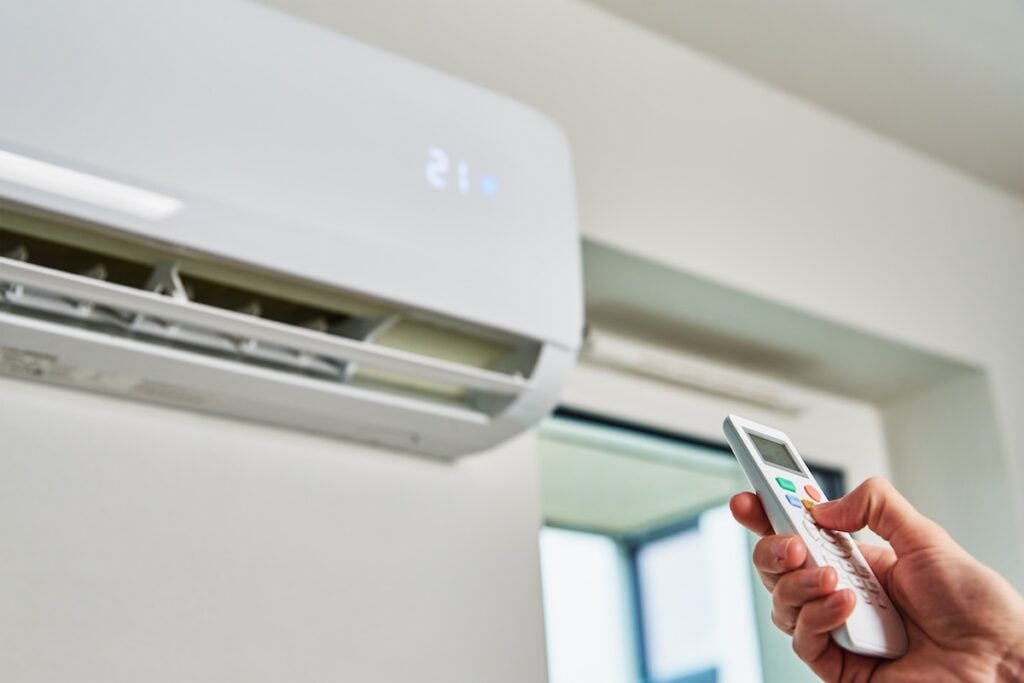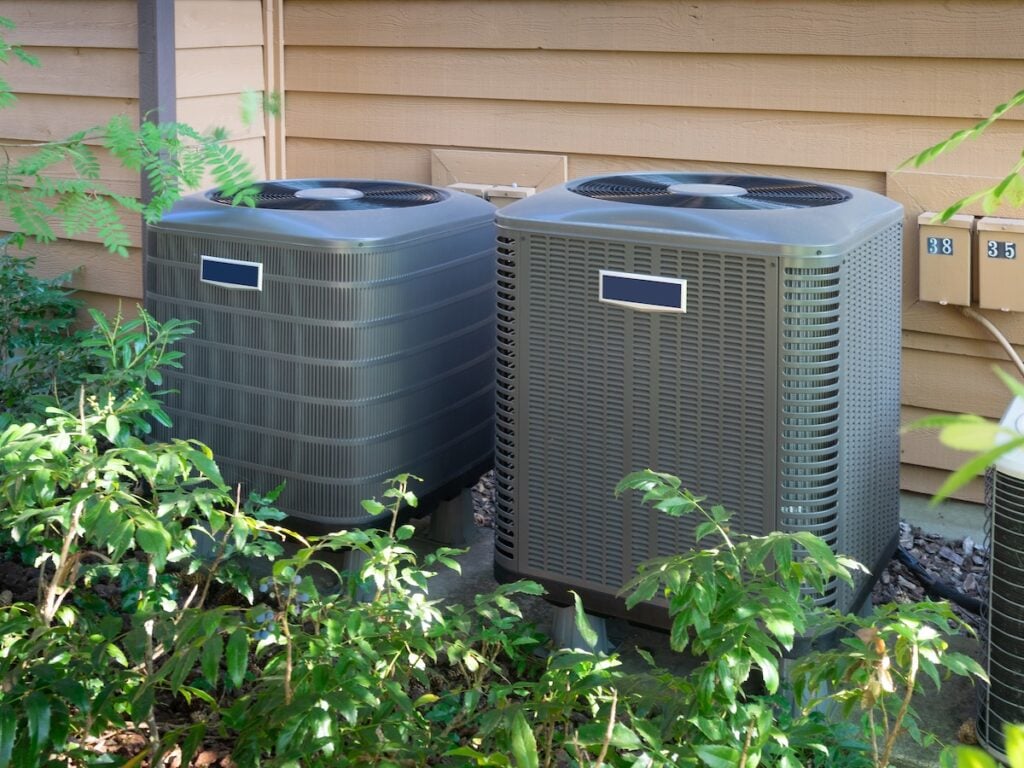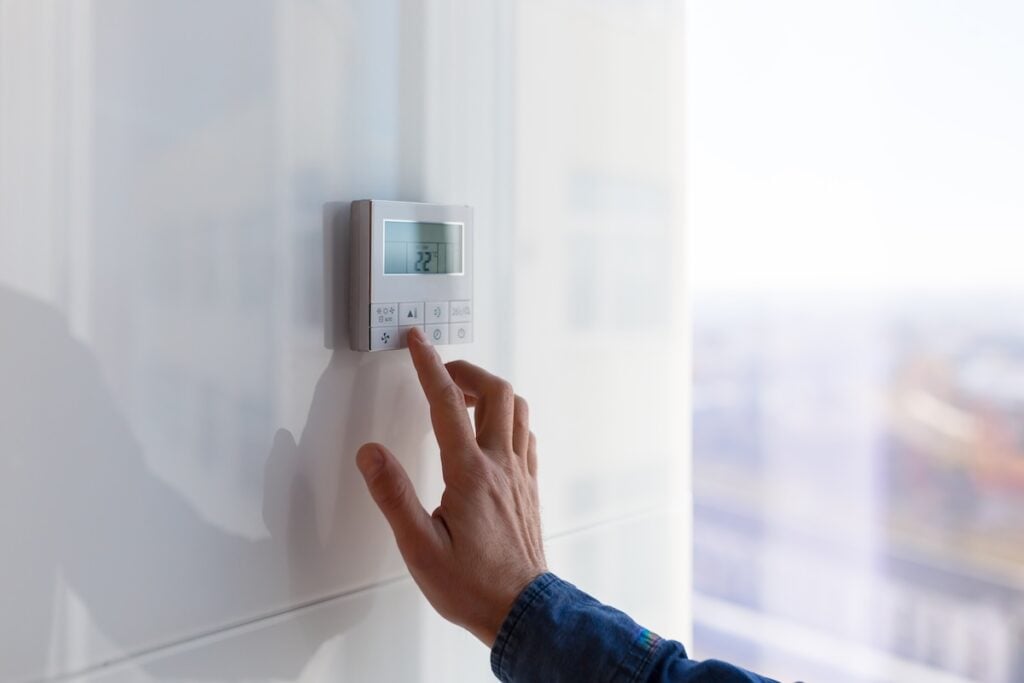Why Your Lights Flicker When AC Turns On? (5 Causes)
If you’ve noticed your lights flicker when your AC turns on, you’re likely wondering, “Is this normal, or should I be concerned?” Lights flickering when the air conditioner starts is a common issue that many homeowners experience, and the good news is, most of the time, it’s fixable. This guide will walk you through the reasons why this happens, what it could mean for your home’s electrical systems, and how you can address the problem before it becomes a larger issue.
What you’ll learn in this article:
- Why lights flicker when AC turns on
- Key causes behind flickering lights
- How to fix the problem and when to call in a professional
🤔 Why Do Lights Flicker When the AC Turns On?

Air conditioners require a significant amount of energy to start because they rely on a high inrush of current for the compressor and motor. During the initial cooling process, the air conditioning system demands substantial power at startup. When this spike in power usage occurs, it can cause a momentary decrease in voltage, leading lights to dim momentarily. The startup of the air conditioning system is responsible for this temporary voltage drop, which causes the flickering.
While a slight flicker is normal, persistent or severe flickering can signal more significant electrical or HVAC system problems that require attention.
Understanding the root cause can save you time, energy, and potentially large repair costs down the line.
What Can You Do About It?
If you’re dealing with flickering lights when your AC starts, here are some steps you can take to address the issue. For complex problems, professional assistance may be necessary:
- Upgrade your electrical system: Older homes may not have wiring equipped to handle the high power demands of modern air conditioning units. Upgrading your wiring or breaker panel can help.
- Install a hard start capacitor: This device reduces the amount of electricity needed to start your AC, minimizing the power draw and preventing flickering lights.
- Schedule an HVAC tune-up: Regular maintenance can ensure your air conditioning unit is running efficiently and isn’t overloading your electrical system. Electrical inspections should be performed by a qualified electrician or trained professional.
- Check for loose connections: Faulty or loose electrical connections can also contribute to flickering. Have a licensed and qualified electrician or trained professional inspect your system to ensure everything is secure.
- Use dedicated circuits: Placing your AC unit on its own dedicated circuit can prevent it from interfering with the rest of your home’s power.
If you are unsure about any step or if the problem persists, seek professional assistance.
⭐️ 5 Common Causes of Flickering Lights When AC Turns On

Here’s why you might be experiencing this disruptive issue in your home. Underlying electrical issues and electrical problems can often be the root cause of lights flickering when the AC turns on. If you notice persistent flickering or the flickering persists, it may indicate more serious electrical issues that require professional attention.
1. Voltage Drop in Your Electrical System
When your air conditioner turns on, it requires a significant amount of electrical power to get its electrical components running. This sudden power surge can cause a temporary reduction in the voltage available to other parts of your home, a phenomenon known as a voltage drop. If too many appliances are connected to the same circuit, the combined demand can result in an overloaded circuit or overloaded circuits, leading to flickering lights and potential safety hazards. The circuit breaker in your home’s electrical system is designed to protect against such overloads by interrupting the flow of electricity if the load becomes too great. This is often noticeable when lights dim or flicker, particularly when energy-intensive appliances are in use. Voltage drops can be frustrating, but they also indicate that your current home’s electrical system may not be equipped to handle the demands of modern appliances. To resolve this issue, you may need to upgrade your electrical panel to increase its capacity and accommodate higher loads. Another solution is to add dedicated circuits specifically for your AC unit, which can ensure it doesn’t interfere with the electrical distribution in other areas of your home and prevent issues caused by sharing the same circuit with other appliances.
2. Loose or Faulty Wiring
Loose electrical connections, old, deteriorating wires, or damaged wires can significantly contribute to flickering lights. When wires or connections are not secure, the flow of electricity is interrupted, creating inconsistencies that can cause lighting systems to dim or flicker. Beyond the annoyance, loose or faulty wiring poses a serious safety risk, including the potential for electrical fires. Attempting yourself repairs on electrical or lighting systems can result in physical harm or even severe injuries. It’s critical to address these issues as soon as possible to ensure your home’s electrical system operates safely and efficiently. The best course of action is to hire a licensed electrician to thoroughly inspect your wiring system. They can identify problem areas, repair or replace faulty wires, and ensure all connections are properly tightened within your breaker panel or outlets.
3. Undersized Electrical Service Panel
Many older homes were built with electrical service panels designed to handle much lower energy demands than today’s appliances require. If your home hasn’t had an electrical upgrade, your service panel may be undersized for the power needed to run modern appliances, including your AC unit. When your panel is overloaded, it can struggle to allocate enough power across your home, resulting in dimming or flickering lights whenever high-demand appliances are in use. Failing to upgrade can lead to costly repairs and increased energy costs due to system inefficiency or damage. To prevent this, you should consider upgrading your electrical service panel to a modern capacity of at least 200 amps. This upgrade is a step toward an energy efficient home and can be part of comprehensive heating and cooling solutions, ensuring your home can safely and efficiently handle the electrical requirements of your appliances and devices.
4. Faulty Capacitor in the AC Unit
Inside your air conditioner is a component called an ac capacitor, which is responsible for delivering the necessary power needed to start the ac compressor. When this ac capacitor becomes weak or begins to fail, it may not supply enough power, causing the power draw from your AC unit to become inconsistent. As a result, your lights may dim significantly or flicker when the system starts. If you suspect the ac capacitor in your AC unit might be the culprit, it’s important to schedule an inspection with an HVAC professional. They can test the ac capacitor, identify whether it is functioning properly, and replace it if necessary to restore your AC unit’s performance and eliminate power inconsistencies.
5. Shared Neutral Wires
In some homes, two circuits may share the same neutral wire. This setup can lead to electrical interference, especially when one of the circuits powers an energy-demanding appliance like your AC unit. When the AC requires a substantial amount of power, the shared neutral wire might struggle to balance the load, causing flickering or dimming lights. A buzzing sound or signs of damaged wires, such as discoloration or charred insulation, may also indicate problems with shared neutral wires. These issues are not only inconvenient but can also create long-term electrical inefficiencies and safety concerns. Addressing these wiring problems can stop lights from flickering and improve overall electrical performance. To address this problem, you should have an electrician inspect your wiring system to identify any shared neutral wires. If necessary, they can install dedicated wiring to ensure each circuit has its own neutral, eliminating the interference and helping to prevent lights from flickering in your home.
👉 How Can You Prevent This in the Future?

The key to minimizing light flicker from your AC unit is ensuring your home’s electrical and HVAC systems are both up to date and properly maintained. Regular HVAC services, including cooling services and customized cooling solutions, can help prevent lights flickering and improve overall system efficiency. Scheduling a service appointment for HVAC repair with our knowledgeable technicians or qualified technicians ensures any issues are addressed promptly and professionally. Some homes may use geothermal air conditioners or a geothermal unit, which have different electrical demands compared to traditional systems—our team is experienced in servicing these as well. We offer a satisfaction guarantee and outstanding heating as part of our comprehensive services, so you can trust your comfort is in good hands.
For more information on maintaining your electrical and HVAC systems, see our related article.
Schedule Regular Maintenance
Routine maintenance is crucial for keeping your air conditioning unit running smoothly and preventing unnecessary wear and tear. By scheduling regular checkups, a professional technician can inspect key components like the capacitor and compressor to ensure they’re functioning properly. This not only helps your AC work more efficiently but also minimizes sudden power spikes that can affect your home’s electrical system. Regular servicing can also extend the lifespan of your unit and save you money on repairs in the long run.
Upgrade Your Electrical System
If your home’s electrical system is outdated, it may struggle to handle the power demands of modern appliances. Upgrading your electrical system to a higher-capacity setup can significantly reduce the likelihood of issues like flickering lights when large appliances, such as an air conditioner, power on. A modern electrical panel and wiring are designed to distribute electricity evenly, ensuring a stable and reliable power supply throughout your home. Consulting a licensed electrician can help you determine the right upgrades for your system.
Install a Soft Starter for Your AC
A soft starter is a valuable addition to your air conditioning unit, as it helps reduce the initial power surge when the system cycles on. Without a soft starter, the sudden spike in electricity can cause lights to flicker or other appliances to momentarily lose power. By gradually increasing the motor’s speed, soft starters minimize these disruptions and improve the overall performance of your AC. This upgrade not only enhances your comfort but also protects your electrical system from unnecessary strain, making it a smart investment for any homeowner.
💡 Lights Flicker When AC Turns On
When it comes to solving the issue of flickering lights when your AC turns on—or any other HVAC-related problem—Panther Heating and Cooling is the team you can trust. With over 30 years of experience, NATE-certified technicians, and a commitment to transparency and quality, we’re dedicated to keeping your home comfortable and safe.
Don’t let electrical or HVAC issues disrupt your daily life—contact Panther Heating and Cooling today for reliable, expert service you can count on. Call us now or schedule your appointment online!
